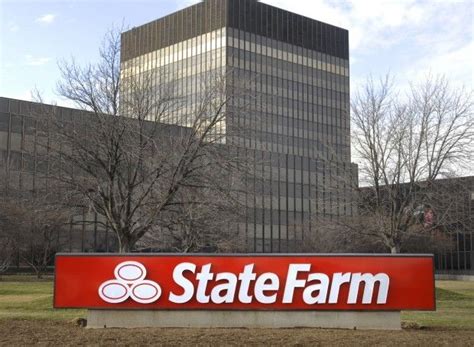State Farm’s Controversial Rate Hike Request: What Developers and Investors Need to Know

A storm is brewing in California’s insurance market, and it could have major implications for real estate developers and investors. State Farm, the nation’s largest home insurer, is facing scrutiny over its request for an emergency 22% rate increase following massive wildfire-related losses. The controversy escalated after the release of a secretly recorded video featuring a company executive, fueling accusations that the insurer is using policy cancellations as a bargaining tool.
The High-Stakes Insurance Battle in California
State Farm’s justification for the steep rate hike is clear: it claims to have suffered $7.6 billion in wildfire-related claims, with reinsurance softening its direct losses to $612 million. The insurer argues that its current surplus of just over $1 billion is insufficient to handle another major catastrophe, necessitating urgent rate adjustments.
But the advocacy group Consumer Watchdog is pushing back. In a letter to California Insurance Commissioner Ricardo Lara, the group pointed to leaked remarks from a State Farm executive to challenge the legitimacy of the request. The allegations suggest that policy cancellations were used strategically to pressure regulators into approving rate hikes—something State Farm vehemently denies.
Secretly Recorded Video Raises Questions
The controversy erupted after hidden camera footage surfaced, capturing comments from Haden Kirkpatrick, vice president of innovation and venture capital at State Farm. Believing he was on a Tinder date, Kirkpatrick was asked whether the company had “orchestrated” policy cancellations in response to California wildfires. His response:
“It kind of is, but not in the way you would think… We’ll go to the Department of Insurance and say, ‘We’re overexposed here, you have to let us catch up our rating.’ And they’ll say ‘nah.’ And we’ll say, ‘OK, then we are going to cancel these policies.’”
State Farm quickly distanced itself from Kirkpatrick, stating that he had no role in the company’s California business decisions and that his remarks misrepresented the insurer’s stance. The executive was reportedly fired following the incident.
The Real Estate Impact: A Growing Insurance Crisis
For developers, investors, and property owners in California, this battle underscores a larger problem: the state’s escalating insurance crisis. State Farm already made waves last year when it canceled 30,000 homeowner policies and exited the commercial apartment insurance market in California altogether.
The company cited financial pressures, including inflation, catastrophe exposure, rising reinsurance costs, and outdated insurance regulations. These challenges aren’t unique to State Farm—other major insurers, including Allstate and Farmers, have also scaled back their presence in high-risk areas.
This trend presents significant hurdles for multifamily developers and commercial investors, who are already facing rising construction costs, stricter environmental regulations, and a difficult lending environment. The shrinking insurance market not only drives up costs but also makes it harder to secure financing for new projects.
Regulatory Uncertainty and Investor Considerations
California’s insurance commissioner has the power to approve or deny State Farm’s rate hike request, but the process is increasingly politicized. The Department of Insurance is facing pressure from both consumer advocates and the insurance industry, leaving the outcome uncertain.
For real estate investors, this is a critical moment to assess risk exposure. If State Farm and other insurers continue to reduce coverage, property owners may be forced to turn to California’s last-resort FAIR Plan, which offers limited protection at high costs.
Key Takeaways for Developers and Investors:
• Expect higher insurance premiums and limited availability in wildfire-prone areas.
• Policy cancellations could accelerate, making it harder to secure financing.
• Regulatory decisions will shape the future of California’s insurance market—watch this space closely.
Looking Ahead
The insurance crisis is reshaping California’s real estate landscape, making risk mitigation more crucial than ever. Developers should consider proactive strategies, such as building with fire-resistant materials, implementing robust risk management plans, and exploring alternative insurance providers.
With billions of dollars at stake, this battle is far from over. Whether State Farm’s rate hike request is approved or denied, one thing is clear: the cost of insuring California real estate is only going up.
Comments
Post a Comment